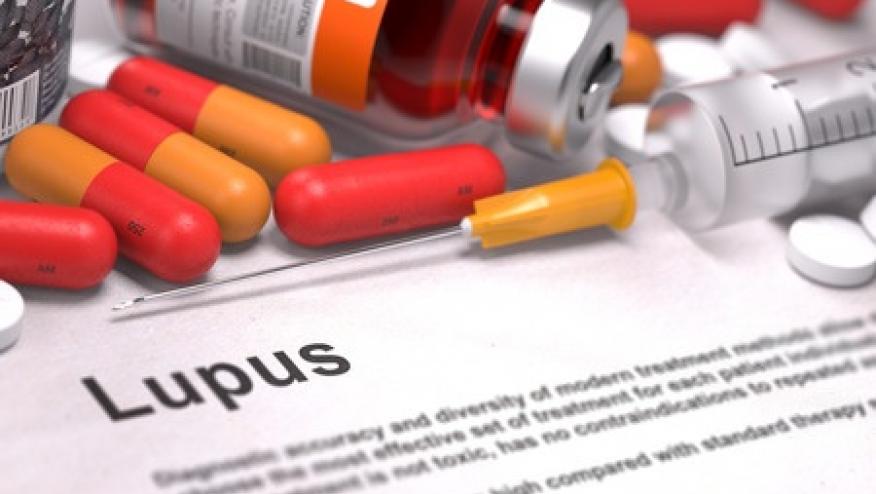EULAR 2019 Update to Lupus Management Save

The EULAR recommendations for the management of systemic lupus erythematosus (SLE) have been updated based on emerging new evidence and after a systematic literature review, Delphi process and expert opinions to reach consensus. The following is exerpted from the Annals of Rheumatic Diseases article.
Overarching Principles
- SLE is a multisystem disease—occasionally limited to one or few organs—diagnosed on clinical grounds in the presence of characteristic serological abnormalities.
- SLE care is multidisciplinary, based on a shared patient-physician decision, and should consider individual, medical and societal costs.
- Treatment of organ-threatening/life-threatening SLE includes an initial period of high-intensity immunosuppressive therapy to control disease activity, followed by a longer period of less intensive therapy to consolidate response and prevent relapses.
- Treatment goals include long-term patient survival, prevention of organ damage and optimisation of health-related quality of life.
Recommendations
Goals of treatment
- Treatment in SLE should aim at remission or low disease activity and prevention of flares in all organs, maintained with the lowest possible dose of glucocorticoids.
- Flares of SLE can be treated according to the severity of organ(s) involvement by adjusting ongoing therapies (glucocorticoids, immunomodulating agents) to higher doses, switching or adding new therapies
Hydroxychloroquine (HCQ)
- HCQ is recommended for all patients with SLE, unless contraindicated, at a dose not exceeding 5 mg/kg/real BW
- In the absence of risk factors for retinal toxicity, ophthalmological screening (by visual fields examination and/or spectral domain-optical coherence tomography) should be performed at baseline, after 5 years, and yearly thereafter
Glucocorticoids (GC)
- GC can be used at doses and route of administration that depend on the type and severity of organ involvement
- Pulses of intravenous methylprednisolone (usually 250–1000 mg per day, for 1–3 days) provide immediate therapeutic effect and enable the use of lower starting dose of oral GC
- For chronic maintenance treatment, GC should be minimised to less than 7.5 mg/day (prednisone equivalent) and, when possible, withdrawn.
- Prompt initiation of immunomodulatory agents can expedite the tapering/discontinuation of GC
Immunosuppressive therapies
- In patients not responding to HCQ (alone or in combination with GC) or patients unable to reduce GC below doses acceptable for chronic use, addition of immunomodulating/immunosuppressive agents such as methotrexate, azathioprine or mycophenolate should be considered.
- Immunomodulating/immunosuppressive agents can be included in the initial therapy in cases of organ-threatening disease
- Cyclophosphamide can be used for severe organ-threatening or life-threatening SLE as well as ‘rescue’ therapy in patients not responding to other immunosuppressive agents
Biologics
- In patients with inadequate response to standard-of-care (combinations of HCQ and GC with or without immunosuppressive agents), defined as residual disease activity not allowing tapering of glucocorticoids and/or frequent relapses, add-on treatment with belimumab should be considered
- In organ-threatening disease refractory or with intolerance/contraindications to standard immunosuppressive agents, rituximab can be considered
Skin disease
- First-line treatment of skin disease in SLE includes topical agents (GC, calcineurin inhibitors), antimalarials (HCQ, quinacrine) and/or systemic GC
- In non-responsive cases or cases requiring high-dose GC, methotrexate, retinoids,dapsone or mycophenolate can be added.
Neuropsychiatric disease
- Attribution to SLE—as opposed to non-SLE—related neuropsychiatric manifestations, is essential and can be facilitated by neuroimaging, investigation of cerebrospinal fluid, consideration of risk factors (type and timing of the manifestation in relation to the onset of lupus, patient age, non-neurological lupus activity, presence of aPL) and exclusion of confounding factors
- Treatment of SLE-related neuropsychiatric disease includes glucocorticoids/immunosuppressive agents for manifestations considered to reflect an inflammatory process, and antiplatelet/anticoagulants for atherothrombotic/aPL-related manifestations
Haematological disease
- Acute treatment of lupus thrombocytopenia includes high-dose GC (including pulses of intravenous methylprednisolone) and/or intravenous immunoglobulin G
- For maintenance of response, immunosuppressive/GC-sparing agents such as mycophenolate, azathioprine or cyclosporine can be used.
- Refractory cases can be treated with rituximab or cyclophosphamide
Renal disease
- Early recognition of signs of renal involvement and—when present—performance of a diagnostic renal biopsy are essential to ensure optimal outcomes
- Mycophenolate or low-dose intravenouscyclophosphamide are recommended as initial (induction) treatment, as they have the best efficacy/toxicity ratio.
- In patients at high risk for renal failure (reduced glomerular filtration rate, histological presence of fibrous crescents or fibrinoid necrosis, or tubular atrophy/interstitial fibrosis], similar regimens may be considered but high-dose intravenous cyclophosphamide can also be used
- For maintenance therapy, mycophenolate or azathioprine should be used.
- In cases with stable/improved renal function but incomplete renal response (persistent proteinuria >0.8–1 g/24 hours after at least 1 year of immunosuppressive treatment), repeat biopsy can distinguish chronic from active kidney lesions
- Mycophenolate may be combined with low dose of a calcineurin inhibitor in severe nephrotic syndrome or incomplete renal response, in the absence of uncontrolled hypertension, high chronicity index at kidney biopsy and/or reduced GFR.










If you are a health practitioner, you may Login/Register to comment.
Due to the nature of these comment forums, only health practitioners are allowed to comment at this time.